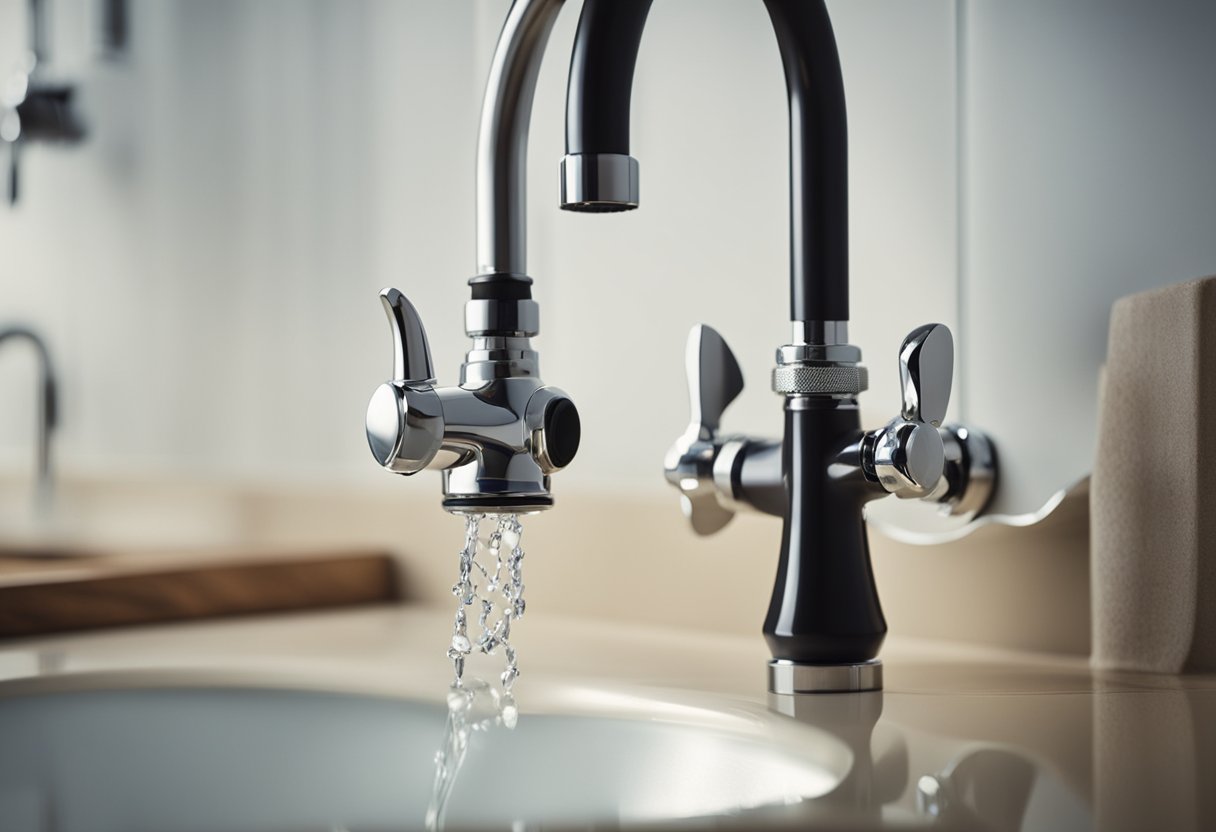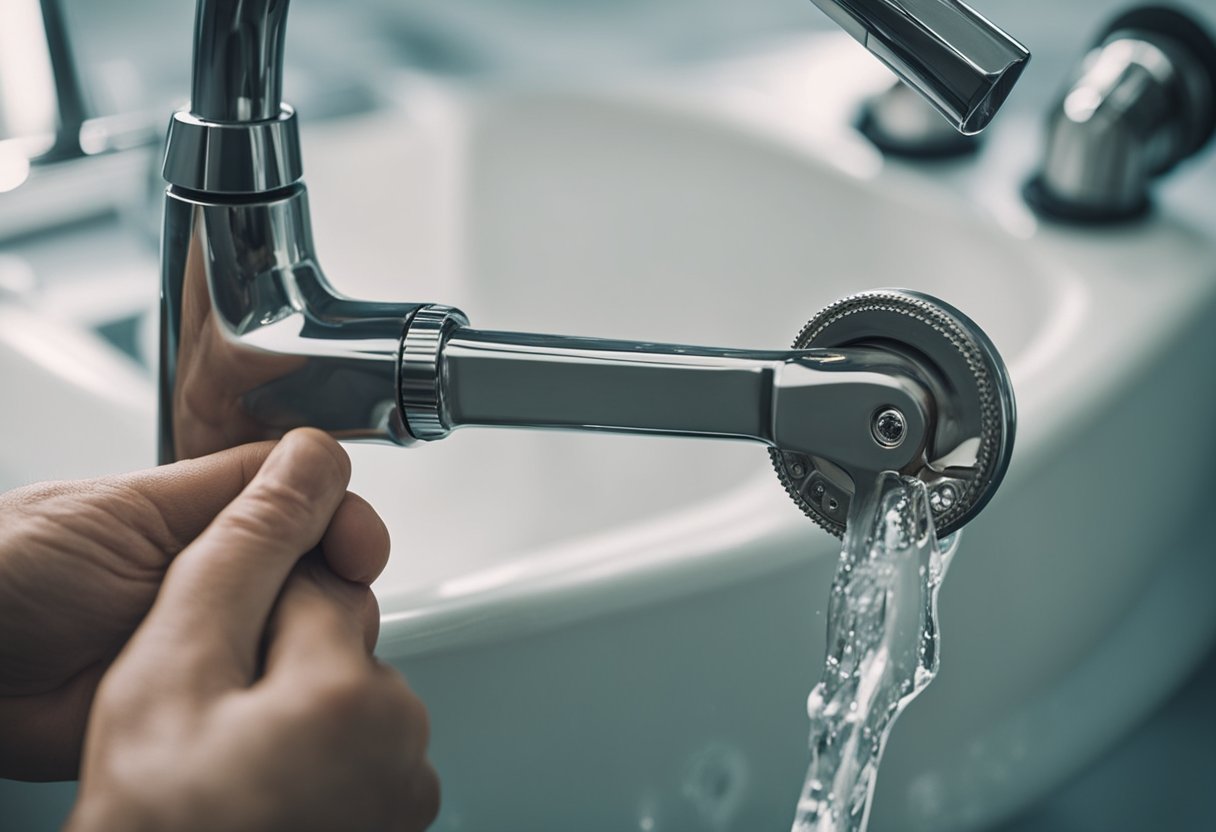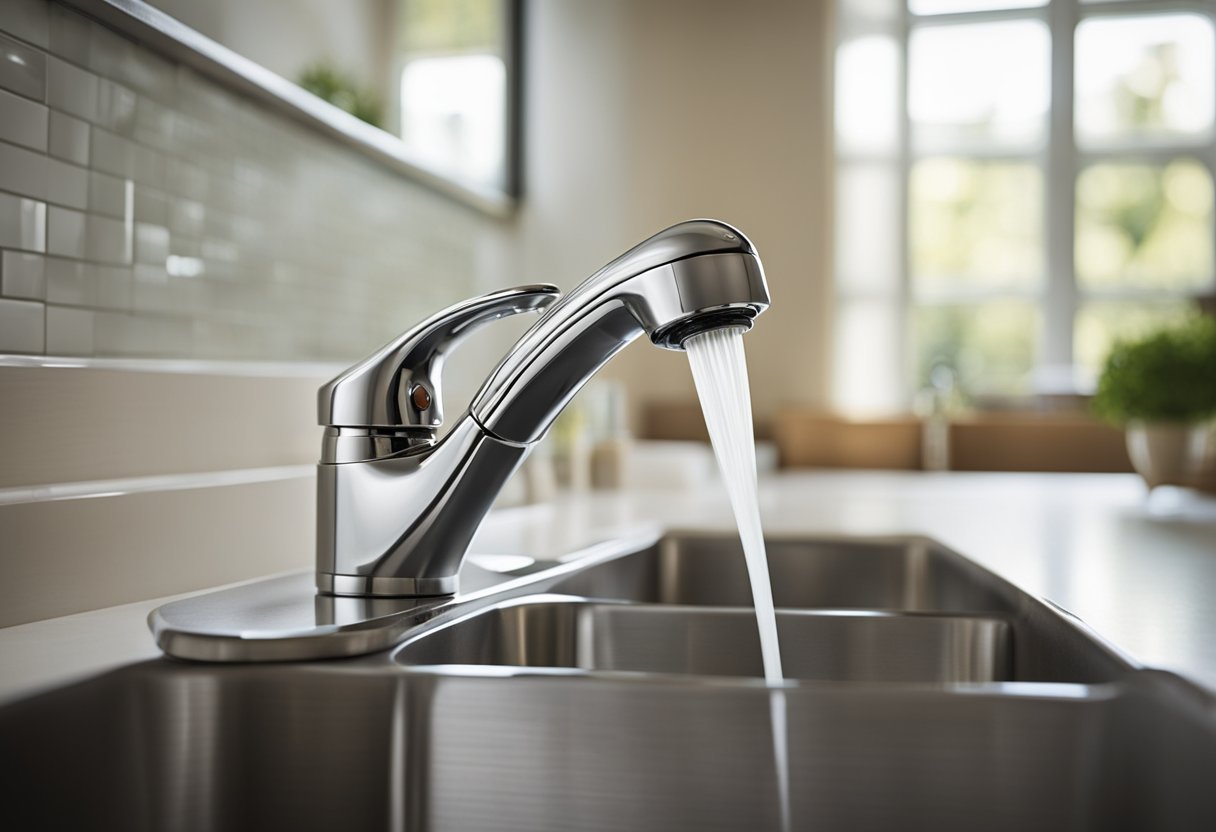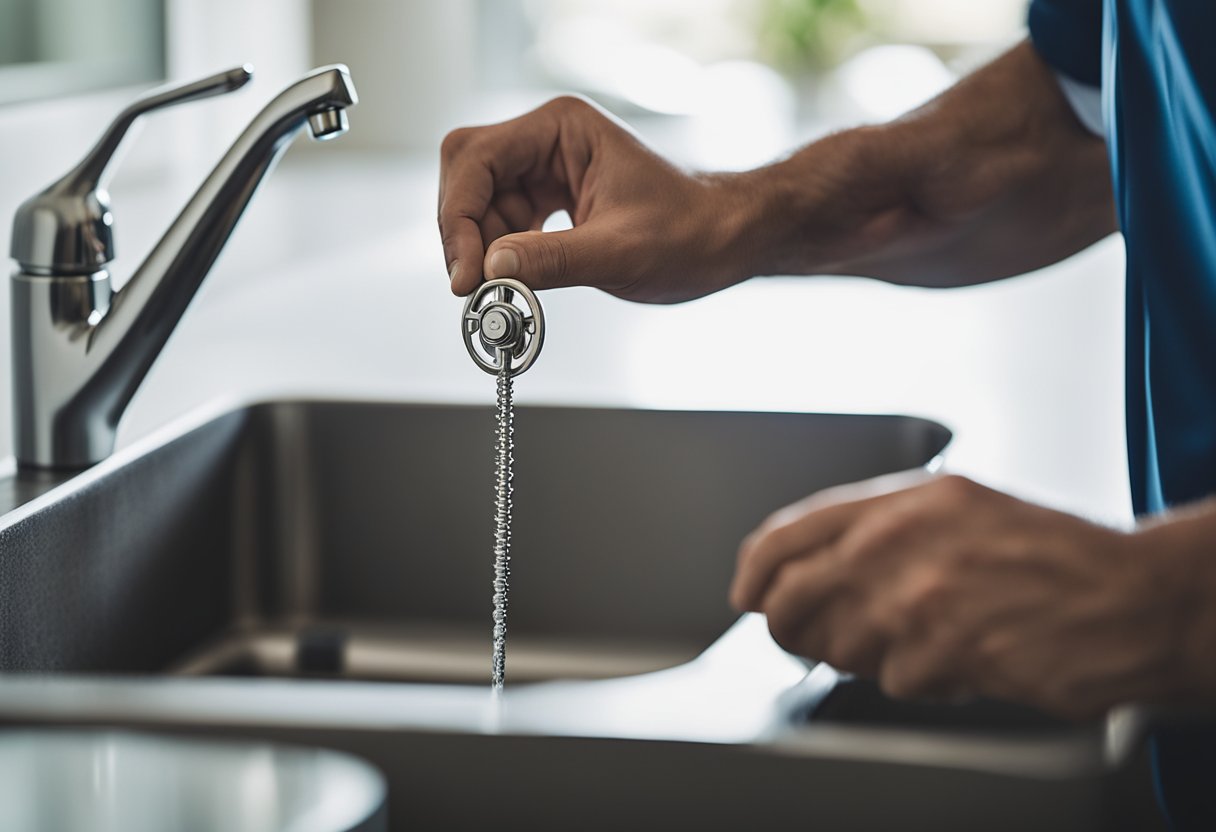Removing a kitchen faucet can be a daunting task, especially if you don’t have a basin wrench. However, with the right tools and knowledge, you can remove a faucet without a basin wrench. In this article, I will guide you through the steps to remove a kitchen faucet without a basin wrench.
Understanding the tools needed to remove a kitchen faucet is essential. While a basin wrench is the most recommended tool for the job, several alternatives can be used. These include a socket wrench, adjustable wrench, or a pair of pliers. Additionally, you may need some penetrating oil to lubricate the nut and make it easier to remove.
Preparation steps are crucial before removing the faucet. These include turning off the valves and locating the water supply lines, opening the spigot, and disconnecting the water piping. Once you have completed these steps, you can proceed to remove the faucet mounting nuts or screws. If you encounter any difficulties during the process, there are several ways to deal with them.
Key Takeaways
- Removing a kitchen faucet without a basin wrench is possible with the right tools and knowledge.
- Essential preparation steps include turning off the valves, locating the water supply lines, and disconnecting the water piping.
- Alternatives to a basin wrench include a socket wrench, adjustable wrench, or a pair of pliers.
Understanding the Tools
When it comes to removing a faucet without a basin wrench, it’s important to understand the tools that can be used as alternatives. While a basin wrench is the most commonly used tool for this task, there are several other tools that can be used effectively.
Socket Wrench
A socket wrench is one of the most effective alternatives to a basin wrench. It works similarly to a basin wrench and can be used to loosen and remove the faucet nuts. This tool is especially useful for hard-to-reach areas where a basin wrench cannot fit.
Pliers
Pliers are another tool that can be used to remove a faucet without a basin wrench. Channel-lock pliers and adjustable pliers are both effective at gripping and turning the faucet nuts. Just be sure to use pliers with a good grip to avoid damaging the nuts or the faucet.
Screwdriver
A screwdriver can be used to remove the screws that hold the faucet in place. This is especially useful for faucets that are attached to a plate or panel. Just be sure to use the right type of screwdriver for the job.
Sink Wrench
A sink wrench is a specialized tool that can be used to remove a faucet without a basin wrench. This tool is designed to fit into tight spaces and can be used to grip and turn the faucet nuts. However, sink wrenches can be expensive and may not be worth the investment for a one-time job.
Professional Plumber
If all else fails, it may be time to call in a professional plumber. A plumber will have all the necessary tools and expertise to remove your faucet quickly and efficiently. While this may be the most expensive option, it can save you time and frustration in the long run.
In conclusion, while a basin wrench is the most commonly used tool for removing a faucet, there are several effective alternatives available. From socket wrenches to pliers to screwdrivers, there are many tools that can get the job done. Just be sure to choose the tool that is best suited for your specific situation.
Preparation Steps
Before beginning the process of removing a kitchen faucet without a basin wrench, it is important to gather all the necessary tools and supplies. Here are the preparation steps to follow:
Step 1: Turn off the water supply
The first step is to turn off the water supply to the sink. Locate the shut-off valve under the sink and turn it clockwise to shut off the water supply. If you cannot locate the valve, turn off the main water supply to the house.
Step 2: Prepare the workspace
Clear the area around the sink and countertop to make room for your tools and supplies. Place a bucket underneath the sink to catch any water that may drip out during the process.
Step 3: Gather the necessary tools and supplies
You will need a few basic tools and supplies to remove the kitchen faucet without a basin wrench. These include:
- Adjustable wrench or pliers
- Socket wrench
- Penetrating oil
- Duct tape
- Two coins
- New faucet (if replacing)
- Washers (if replacing a leaky faucet)
Make sure you have all the necessary tools and supplies before beginning the process.
Step 4: Prepare the water supply lines
Disconnect the water supply lines from the faucet. Use an adjustable wrench or pliers to loosen the nuts that hold the water supply lines in place. Place a bucket underneath to catch any water that may drip out.
Step 5: Remove the mounting nuts
Use a socket wrench to loosen and remove the mounting nuts that hold the faucet in place. If the nuts are difficult to remove, apply some penetrating oil to loosen them up.
Step 6: Remove the faucet
Lift the faucet off the sink and remove any remaining mounting hardware. If you are replacing the faucet, install the new faucet and reconnect the water supply lines.
By following these preparation steps, you should be able to remove a kitchen faucet without a basin wrench.
Removing the Faucet
https://www.youtube.com/watch?v=oOWUF9dDeQo&embed=true
Removing a kitchen faucet without a basin wrench can seem daunting, but with the right tools and some basic knowledge, it can be done with ease. Here’s a step-by-step guide on how to remove a faucet without a basin wrench:
-
Turn off the water supply: Before starting the faucet removal process, turn off the water supply to prevent any water leakage.
-
Disconnect the water supply lines: Use a pair of water pump pliers to disconnect the hot and cold water supply lines from the faucet. Place a towel under the sink to catch any water that may spill out.
-
Remove the mounting nut: Use a channel lock pliers or a pair of adjustable pliers to loosen the mounting nut that holds the faucet in place. If the nut is stuck, use penetrating oil or vinegar to loosen the corrosion or rusting.
-
Remove the screws: Once the mounting nut is removed, locate and remove the mounting screws that hold the faucet to the sink. If the screws are stuck, use WD-40 or tap the end of the screwdriver with a hammer to loosen them.
-
Lift the faucet: Carefully lift the faucet out of the sink. If the faucet is stuck, use air pressure or a cable fastener to remove it.
-
Clean the sink: Use a scraper to remove any leftover residue or gunk from the sink.
-
Check for leaks: After removing the faucet, check the water piping for any leaks or plumbing issues.
By following these steps, you can easily remove a kitchen faucet without a basin wrench and complete your home improvement or DIY project.
Dealing with Difficulties
https://www.youtube.com/watch?v=fYjAjoUoG14&embed=true
Removing a faucet without a basin wrench can be a challenging task, especially when dealing with plumbing issues. However, with the right tools and techniques, you can overcome these difficulties and successfully remove the faucet. In this section, I will discuss some common problems you may encounter and how to address them.
Corrosion and Rusting
One of the most common problems you may encounter when removing a faucet is corrosion and rusting. This occurs when the mounting screws and other plumbing fixtures are exposed to moisture and air, causing them to rust and corrode over time. To remove a corroded or rusted faucet, you may need to use a penetrating oil or vinegar to loosen the screws. You can also use a scraper or an adjustable wrench to remove the screws, but be careful not to damage the plumbing fixtures.
Leaks and Water Leakage
Another issue you may face when removing a faucet is leaks and water leakage. This can occur when the faucet is not properly installed or when the mounting screws are loose. To fix this problem, you may need to tighten the screws or replace the mounting screws altogether. You can also use an air pressure tool to blow out any debris or blockages in the plumbing system that may be causing the leaks.
Difficult to Reach Screws
Sometimes, the screws holding the faucet in place can be difficult to reach, especially if they are located in tight spaces. In this case, you can use a channel lock pliers or a threaded rod to remove the screws. You can also use a hammer to gently tap the screws to loosen them.
Low Water Pressure
If you are experiencing low water pressure after removing the faucet, it may be due to a clogged aerator. To fix this problem, you can remove the aerator and clean it thoroughly with soda or vinegar. You can also use a screwdriver to remove any debris or blockages in the aerator.
Conclusion
Removing a faucet without a basin wrench can be a challenging task, but with the right tools and techniques, you can do it successfully. By addressing common problems such as corrosion, leaks, and difficult-to-reach screws, you can ensure that the faucet is removed safely and without causing any damage to your plumbing system.
Installing the New Faucet
https://www.youtube.com/watch?v=ZpQWJaNo0sY&embed=true
Now that I have successfully removed the old faucet, it’s time to install the new one. Before starting the installation, I made sure to read the manufacturer’s instructions carefully to ensure that I have all the necessary tools and parts.
The first step in installing the new faucet is to place the rubber or plastic gasket onto the sink. This gasket will help prevent water from leaking under the faucet. Next, I inserted the new faucet into the mounting holes on the sink, making sure that it is centered and level.
Once the faucet is in place, I secured it with the mounting nuts provided with the new faucet. I tightened the nuts by hand, making sure not to overtighten them. If needed, I used a basin wrench or water pump pliers to tighten the nuts further.
After securing the faucet, I connected the water supply lines to the faucet’s tailpieces. I used Teflon tape to ensure a tight seal and prevent leaks. Once the supply lines were connected, I turned on the water supply valves to check for any leaks.
Finally, I tested the new faucet by turning on the water and checking for any leaks around the base of the faucet or the supply lines. If there were any leaks, I tightened the mounting nuts or supply line connections until the leaks stopped.
Overall, installing a new kitchen faucet can be a simple and rewarding home improvement project. With the right tools and a step-by-step guide, anyone can replace their old kitchen faucet with a new one.
Final Checks and Maintenance
After removing the faucet without a basin wrench, it is essential to perform some final checks and maintenance to ensure that the sink and plumbing fixtures are in good condition.
Firstly, check the valves to ensure that they are tightly closed. If there is any leakage, use a cable fastener to tighten them. If the valves are corroded or rusted, it may be necessary to replace them.
Next, inspect the water supply lines and hoses for any leaks or damages. If there are any leaks, turn off the water supply and fix them immediately. If there are damages, replace them with new ones.
It is also a good idea to clean the sink and plumbing fixtures thoroughly. Use a bucket of water and some mild detergent to clean the sink and spigot. Remove any dirt or debris from the waterline and plumbing fixtures.
If there are any plumbing issues, such as low water pressure or a leaky faucet, it may be necessary to call a professional plumber. They can inspect the plumbing system and recommend the best course of action.
Finally, if you notice any small leaks around the base of the faucet, you can use duct tape or coins to seal them temporarily. However, it is best to replace the faucet as soon as possible to avoid any further water leakage.
In summary, removing a faucet without a basin wrench requires some effort and careful attention to detail. However, by following the steps outlined in this article, you can successfully remove the faucet and perform the necessary maintenance to ensure that your sink and plumbing fixtures are in good working condition.
When to Call a Professional
As a homeowner, it’s important to know when to call a professional plumber. While removing a faucet without a basin wrench may seem like a simple task, it can quickly turn into a plumbing nightmare if you don’t have the right tools or experience.
If you’re experiencing plumbing issues such as low water pressure or a leaky faucet, it may be time to call in a professional. A licensed plumber has the expertise and tools necessary to diagnose and fix the problem quickly and efficiently.
Attempting to remove a faucet without a basin wrench can also turn into a home improvement project gone wrong. If you’re not confident in your plumbing skills, it’s best to leave the job to a professional.
In addition, attempting to remove a faucet without the proper tools can cause damage to your plumbing fixtures. This can result in costly repairs down the road.
Overall, if you’re not confident in your ability to remove a faucet without a basin wrench, it’s best to call in a professional plumber. They have the knowledge and experience necessary to get the job done right the first time.
Frequently Asked Questions
What size basin wrench is needed for a kitchen faucet?
The size of the basin wrench needed to remove a kitchen faucet depends on the size of the mounting nuts. Most kitchen faucets have mounting nuts that are either 1/2 inch or 3/8 inch. Therefore, you will need a basin wrench that can accommodate these sizes.
What is the appropriate tool to remove a kitchen faucet nut?
The appropriate tool to remove a kitchen faucet nut is a basin wrench. A basin wrench is a specialized tool designed to fit into tight spaces and grip hexagonal nuts. It has a long handle that allows you to reach the nuts that hold the faucet in place.
What is the difference between a basin wrench and a faucet tool?
A basin wrench and a faucet tool are two different tools used to remove a kitchen faucet. A basin wrench is a specialized tool designed to fit into tight spaces and grip hexagonal nuts. On the other hand, a faucet tool is a multi-purpose tool that can be used to remove a variety of plumbing fixtures, including kitchen faucets.
Can a kitchen faucet be removed without a basin wrench?
Yes, a kitchen faucet can be removed without a basin wrench. There are several alternative tools that you can use to remove a kitchen faucet, such as a socket wrench, adjustable wrench, or pliers. However, using these tools can be more challenging and time-consuming than using a basin wrench.
What are some alternative tools to use instead of a plumber’s wrench?
Some alternative tools that you can use instead of a plumber’s wrench include a socket wrench, adjustable wrench, or pliers. However, it’s important to note that using these tools can be more challenging and time-consuming than using a basin wrench.
Where can I find the best basin wrench for removing a kitchen faucet?
You can find the best basin wrench for removing a kitchen faucet at your local hardware store or online. Look for a wrench that is adjustable, has a long handle, and can accommodate the size of the mounting nuts on your kitchen faucet.

Hi, I’m Sal Muller of Tooltrip.com. My DIY experience led me to understand essential power tools for home projects. Tooltrip.com guides enthusiasts and professionals in choosing right tools for any job. I provide concise top tool reviews for easier, efficient DIY.







